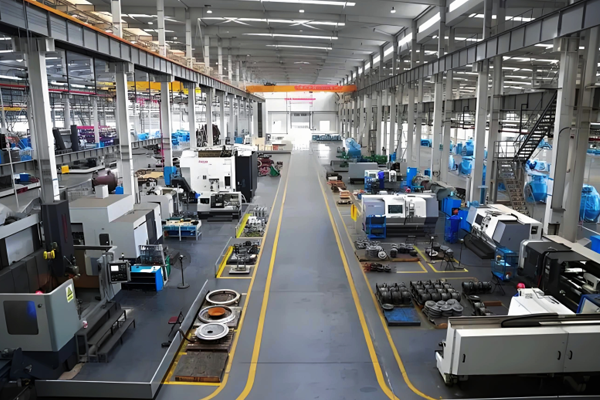
butt Weld Elbow
Butt Weld Elbow is a type of pipe fitting that is directly connected to the end of a pipeline through welding. It is mainly used to change the direction of the pipeline (such as 90 °, 45 ° turning). Due to its high connection strength and good sealing, it is widely used in high-pressure, high-temperature, and important industrial pipeline systems. Here is a detailed introduction:
1、 Core feature: Advantages of butt welding connection
The two ends of the butt welded elbow are designed with grooves that match the outer diameter and wall thickness of the pipeline (such as V-shaped, U-shaped), and are fused with the pipeline through welding. Its core advantages are reflected in:
High strength connection: After welding, it forms a whole structure with a much higher ability to bear pressure and impact force than threaded or flange connections, suitable for high-pressure (≥ 10MPa) systems.
Low fluid resistance: The inner wall is smooth, with no threads or flange protrusions, reducing turbulence and pressure loss during medium flow. It is suitable for transporting high viscosity or easily clogged media (such as crude oil and slurry).
Excellent sealing performance: The welding interface can be completely sealed, avoiding the risk of leakage under low pressure, especially suitable for toxic, flammable, and explosive media (such as natural gas and chemical raw materials).
Wide applicability: It can match various materials (carbon steel, stainless steel, alloys) and working conditions (high temperature, low temperature, corrosive environment), and is a "universal turning solution" for industrial pipelines.
2、 Category: By angle, curvature radius, and molding process
Divided by angle
90 ° butt welded elbow: the most commonly used for vertical turning pipelines, such as the connection between equipment inlet and outlet and main pipelines.
45 ° butt welding elbow: used for smooth turning and reducing medium impact, such as fine adjustment direction for long-distance pipelines.
180 ° butt welded elbow: also known as "U-shaped elbow", used for pipeline turning back (such as heat exchanger inlet and outlet, pipeline compensation section).
Special angles: such as 30 ° and 60 °, require customized production for complex pipeline layouts.
Divided by curvature radius
Long radius butt welded elbow (LR): curvature radius R=1.5D (D is the nominal diameter of the pipeline), low fluid resistance, suitable for most conventional working conditions.
Short radius butt welded elbow (SR): curvature radius R=1.0D, saving installation space, used in scenarios with dense pipelines (such as internal pipelines of equipment), but with high impact force during medium flow, it needs to be used with caution in high-pressure systems.
Divided by molding process
Hot push formed butt welded elbow: By heating the steel pipe blank and using a mold to push out the shape of the elbow, the inner wall is smooth and the wall thickness is uniform. It is a mainstream process suitable for small and medium-sized diameters (DN15-DN600).
Stamping formed butt welded elbow: formed by stamping steel pipe blanks with molds, with high efficiency but slightly large wall thickness deviation, commonly used in medium and low pressure, small diameter scenarios.
Forged butt welded elbow: using forging technology (heating and forging), the material is dense and has extremely high strength, suitable for high-pressure and thick walled pipelines (such as power stations and oil and gas extraction), but the cost is relatively high.
3、 Common materials
The material of the butt welded elbow should match the pipeline to ensure welding compatibility and overall performance:
Carbon steel: such as 20 # Q345(16Mn), Suitable for normal/medium temperature systems (≤ 425 ℃) with no strong corrosion to water, steam, oil, etc.
Stainless steel: such as 304 (resistant to general corrosion) and 316 (resistant to acid, alkali, and seawater corrosion), used in corrosive environments such as chemical, food, and pharmaceutical industries.
Alloy steel pipes, such as 12Cr1MoV (high temperature resistance) and Cr5Mo (hydrogen corrosion resistance), are used in high temperature (>450 ℃) and high pressure systems such as power plant boilers and refining units.
Low temperature steel: such as 09MnNiD, suitable for low-temperature environments (≤ -40 ℃), such as liquefied natural gas (LNG) pipelines.
4、 Production Process Flow (Taking Hot Push Molding as an Example)
Preparation of raw materials: Select steel pipes of the same material and wall thickness as the pipeline, and cut them into corresponding lengths of raw materials.
Heating: Send the billet into a heating furnace and raise the temperature to 800-1000 ℃ (adjusted according to the material) to make it malleable.
Hot push molding: The heated billet is placed on a core rod, and the mold is pushed by a hydraulic press to bend the billet along the core rod to the desired angle and curvature, while ensuring uniform wall thickness (deviation ≤ 12.5%).
Groove processing: Cut the groove at both ends to ensure it matches the groove of the pipeline (e.g. 30 °± 5 ° angle, blunt edge thickness 2-3mm), making it easy to weld.
Heat treatment: After forming, annealing or normalizing treatment is carried out to eliminate processing stress and avoid cracking during use (especially for alloy materials).
Inspection: including dimensional testing (angle, curvature radius, wall thickness), non-destructive testing (ultrasonic or radiographic testing of welding quality), and water/air pressure testing (to verify pressure resistance).

+86-15533769121

Jango

jango@yuntaopiping.com

Beixiaozhuangzi Industrial Zone, Mengcun Hui Autonomous County
Copyright © 2025-2026 http://www.yuntaopiping.com. All Rights Reserved Yuntao Piping Group.,Ltd.Copyright



